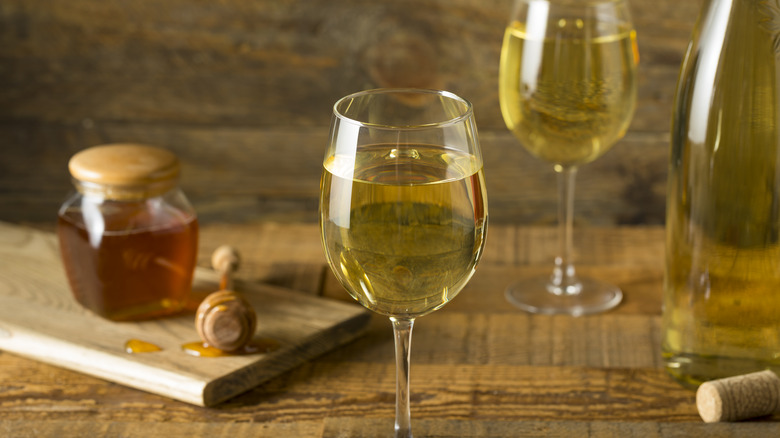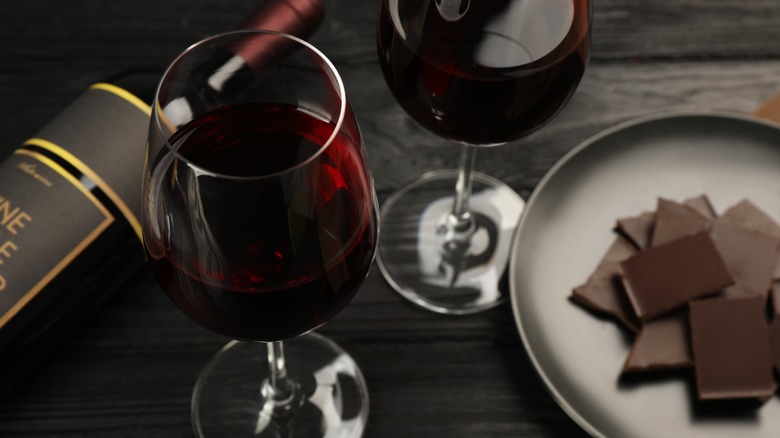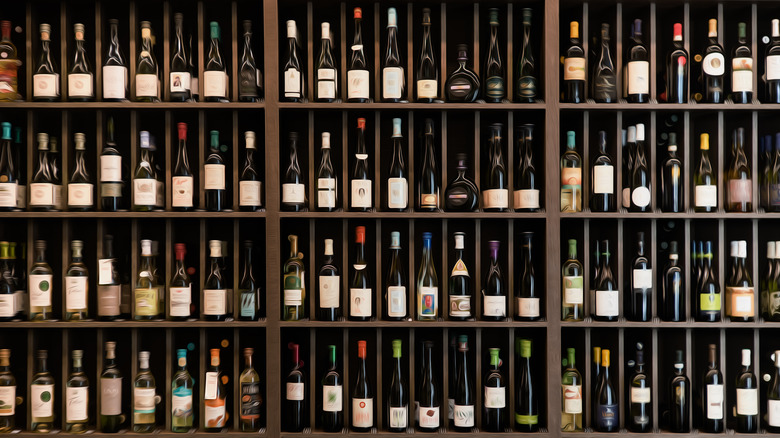What To Look For When Shopping For A Well-Balanced Sweet Wine
For an oenophile, several wine-pairing hurdles must be accomplished in order for them to call themselves a true wine enthusiast. First and foremost, you need to learn how to pair wine with cheese. Second, any self-respecting vino expert knows the perfect wine to accompany a steak dinner. These are fundamentals of wine pairing. But what about pairing wine with dessert? This calls for something on the sweeter side.
Selecting the perfect bottle of wine is hard enough, but shopping for a well-balanced sweet wine can feel like navigating a particularly fraught minefield. One misstep and you'll be uncorking a pricey bottle that has more in common with balsamic vinegar than wine. So if you're looking to pick the perfect sweet wine to mark a romantic occasion, it's best to trust the experts rather than playing riesling roulette.
Enter Matt Woodburn-Simmonds, founder of Decoding Wine. He's got all of the wine wisdom and none of the pretension. So what are Woodburn-Simmonds' top tips for hitting the sweet wine jackpot?
A sommelier's sweet suggestions
From the top, Woodburn-Simmonds warns that acquiring a proper sweet wine is a more expensive endeavor. So prepare to pay more for the good stuff, but don't use the price tag alone as your guide. He recommends reaching for certain labels and geographic regions of Europe. Look for wines from the "Appelation Controlee" region in France, like Monbazillac or Sauternes. German Rieslings are a great place to start as well, particularly ones labeled with the term "prädikatswein," which denotes a higher quality. Rieslings have dry varieties as well as sweet, so make sure you're reaching for the bottles that have "auslese," "spätlase," or "beerenauslese" on the labels.
Woodburn-Simmonds also recommends keeping an eye out for lesser-known sweet white varieties like furmint, Timorasso, Grüner Veltliner, and fiano. If you're opting for an uncommon sweet red wine, stick to Italian varieties being grown in warmer climates, like Sangiovese, Nebbiolo, Barbera, and Aglianico. On the flip side, Woodburn-Simmonds has a word of caution for one wine in particular. "Almost all pinot grigio is insipid and terrible," he says. Instead, opt for reaching for the fruitier, more full-bodied pinot gris.
These terms and labels will only take you so far — the next step is navigating the wine shop and making the most of the help on hand.
Talking the talk at the store
According to Woodburn-Simmonds, the main thing to keep in mind when wine shopping is that the staff is there to help. Provide them with plenty of information, including what you're looking for and what wines you've loved in the past. And don't be afraid to be honest — even if your favorite wine happens to be a version of Two-Buck Chuck from Trader Joe's. This honesty will help the staff find a bottle you'll like, rather than just one you think will impress them. "Nobody started off drinking 100 point cabernets from Napa or first growth Bordeaux, at least no one who works in a wine store did," Woodburn-Simmonds says. So feel free to keep it real.
Woodburn-Simmonds is virulently against the gatekeeping that plagues the wine industry. So if you do encounter a snobby staff more intent on making you feel ignorant than helping you select the right bottle, he advises you to take your business elsewhere. He promises there are plenty of other places — and friendly wine experts — you can turn to.
With these words of wisdom in mind, go forth and discover the delightful world of well-balanced sweet wines. The results will be well worth the research.


